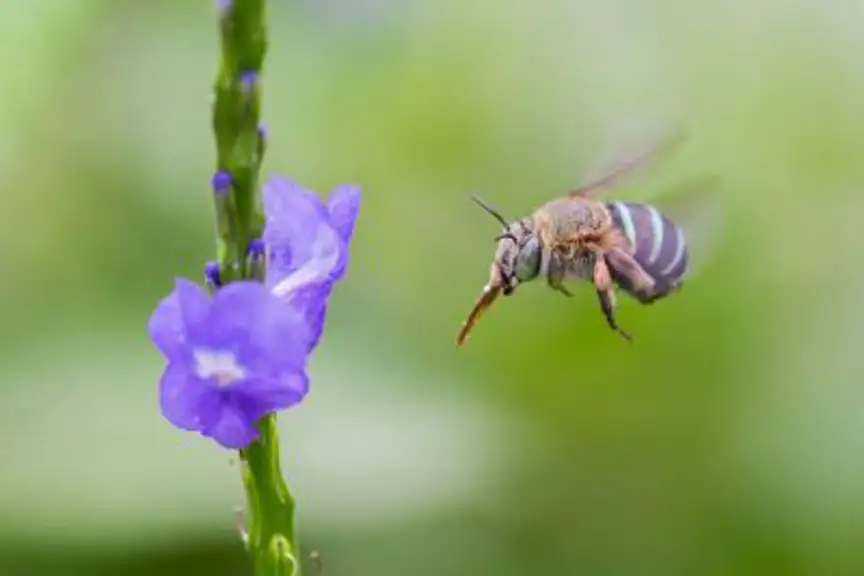Buzz Pollination
What is buzz pollination?

What is buzz pollination?

In certain plants the pollen is held within tight tubes. Occasionally wind will create enough disturbance to loosen some of the pollen from these tubes, but the job is done much more efficiently by flying insects that grab the pollen-bearing part of the flower with their mouths (mandibles) and hold on firmly while, at the same time, contracting their flight muscles hundreds of times per second, all without moving their wings. This strong vibration releases the pollen which then lands on the flower's own female parts or is carried away to another flower by the pollinating insects.
About 8 percent of the world's flowering plants (more than 20,000 species) must have their pollen released in this manner. The list includes many Australian native plants such as solanum, hibbertia and dianella species. And, importantly for gardeners, common edible plants such as eggplant, tomatoes, potatoes, chillis, blueberries, cranberries and kiwifruit also fall into this category.
Interestingly, the common honey bee can't buzz pollinate (so, while it's important to encourage honey bees into your garden, they won't help your tomatoes to set fruit). Bumblebees, which are present in New Zealand and Tasmania, are effective buzz pollinators. In Australia tomatoes growing in glasshouses are often pollinated by hand-operated mechanical vibrators, a method which is effective but costly. There has been some pressure from Australian glasshouse tomato growers to allow the introduction of bumblebees into the mainland to pollinate their crops, but so far the authorities have resisted. Certain Australian native bees – such as blue banded bees, carpenter bees and teddy bear bees - are very good buzz pollinators and breeding these in commercial numbers could well be the answer to the glasshouse growers' problems. http://australianmuseum.net.au/movie/Buzz-pollination
You can encourage native bees by growing native plants and leaving some wild sections in your garden where they can breed and feed (many nest in the ground).